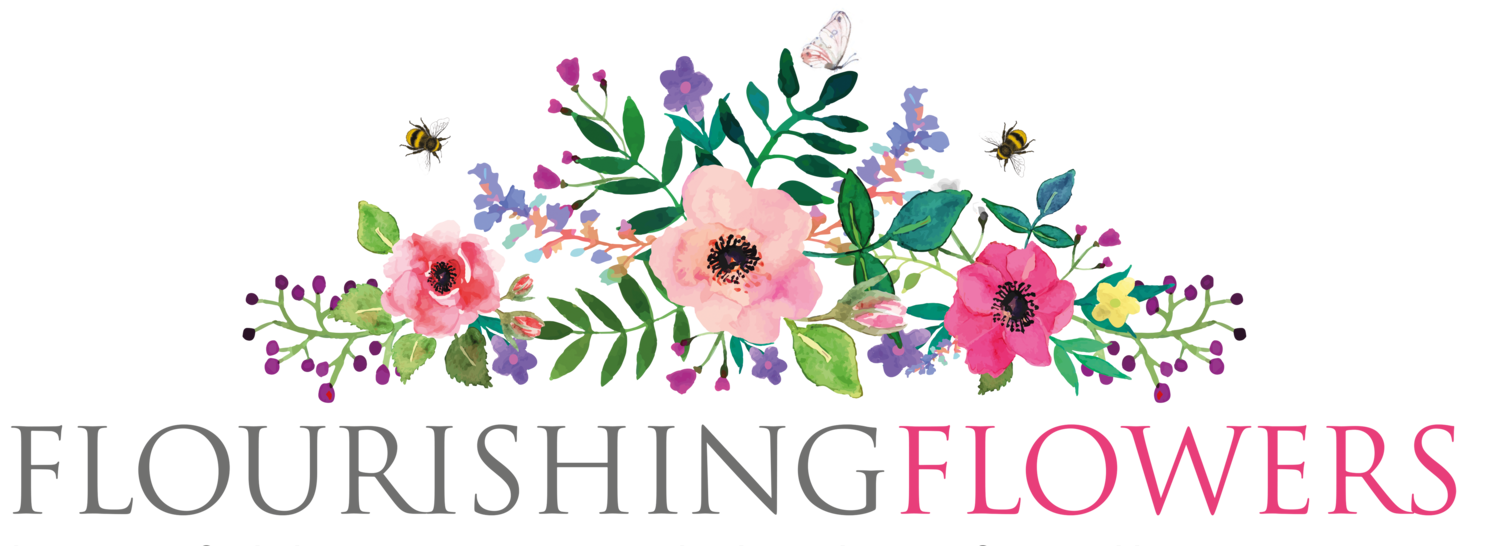For those that know my work, know that I am passionate about creating eco-friendly floral designs. In this blog, I will shed light on the importance of using locally and British sourced flowers and foliage, avoiding floral foam, and making conscious choices for sustainable arrangements. By adopting these practices, it allows me to create beautiful funeral and celebration flower designs while minimising our environmental impact.
Locally and British Sourced Flowers and Foliage:
I prioritise using locally sourced flowers and foliage that are in season, as well as my own when possible. By supporting local growers and British flower farms, we reduce the carbon footprint associated with long-distance transportation. These locally sourced blooms not only showcase the beauty of our region but also ensure that the flowers are fresh and long-lasting.
Sustainable Practices in Floral Arrangements:
Sustainability in floral design goes beyond sourcing. It encompasses how the arrangements are made up. For example, taking into consideration the amount of air miles clocked up when flowers come from abroad.
Floral Foam: An Environmental Concern:
Floral foam, often used as a foundation for arrangements, has a detrimental impact on the environment. It consists of thousands of microplastics and chemicals, including formaldehyde. When floral foam breaks up, these harmful substances enter the water course, polluting our waterways and seeping into the land.
Plastic Bases and Landfill:
Additionally, many floral designs incorporate plastic bases that end up in landfill unless they are reused. To combat this issue, I encourage the use of sustainable alternatives such as reusable containers, particularly those made of glass. For creating a sturdy base, I employ sustainably sourced moss, chicken wire, or sticks and branches, reducing our reliance on plastic materials.
Compostable and Eco-Friendly Options:
To exemplify eco-friendly floral design, I’ll often create arrangements that are fully compostable. By using biodegradable materials such as twigs, moss, and flowers, I can ensure that my designs return to the earth after their purpose is fulfilled. These compostable arrangements not only add a touch of natural beauty to any occasion but also contribute to a healthier environment.
Here’s a flower heart, made of twigs and seasonal blooms and fully compostable. Simplicity can be stunning
Why Foam-Free Flower Arranging Matters:
You may wonder why it is so important to avoid foam in floral arranging or floristry. While foam may seem convenient and some variants claim to be biodegradable, it is essential to understand the underlying issues. When I attended college I don't remember being given an alternative or any information on the down side of its use, it was just sold to us as a brilliant product. So if you don't know why it's such an issue, this may enlighten you:
Microplastics and Formaldehyde: Floral foam contains thousands of microplastics and chemicals, which pose a threat to our ecosystems.
Unsuitability for Composting: Floral foam cannot be added to your compost pile. Its composition inhibits proper decomposition and the release of nutrients back into the soil.
Biodegradability in Landfill: Even the foam labelled as "biodegradable" (with the exception of Agra wool) will only degrade under specific conditions. Once in landfill, we have no control over these conditions, rendering the foam's biodegradability ineffective.
Conclusion:
By embracing eco-friendly floral design practices, we can honour the beauty of nature while promoting sustainability. Opting for locally and British sourced flowers, avoiding floral foam, and utilising compostable materials not only reduces our environmental impact but also supports ethical practices in the floral industry.



